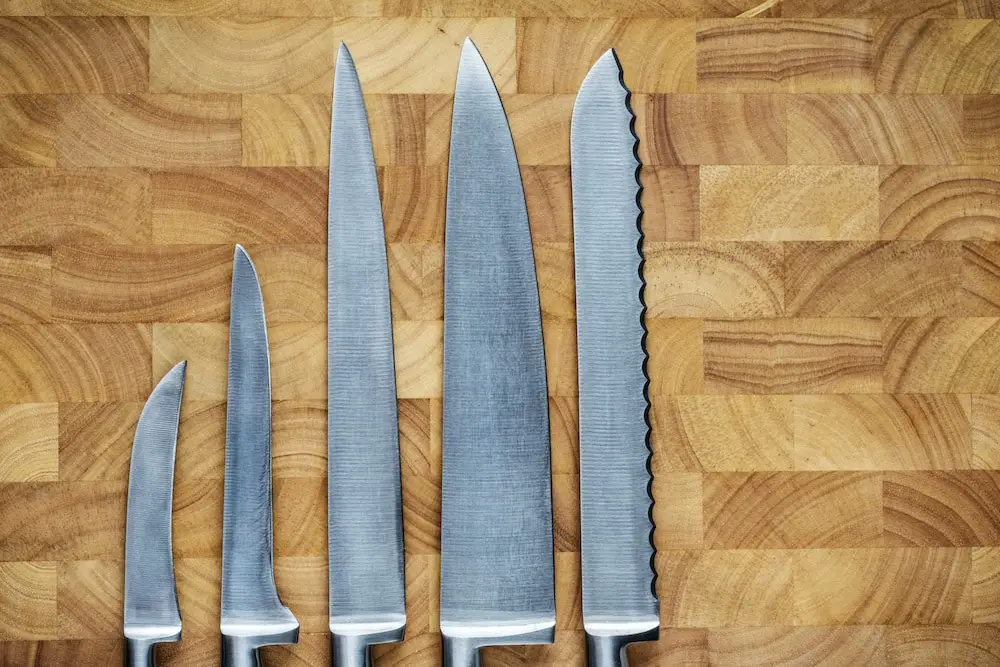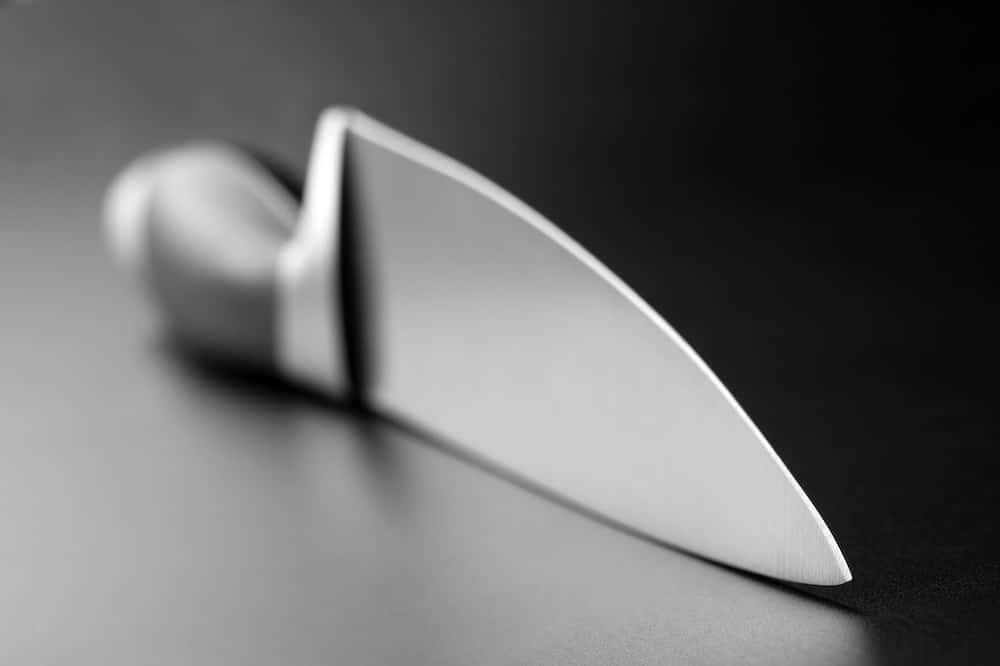What makes a good knife? A knife’s effectiveness is determined by three main things: the design, the manufacturing process, and the best knife blade material.
Today, we’ll be focusing on the third one.
Since knives are an essential tool in any kitchen, you must know what it’s made of before even purchasing it.
Some general knowledge of the different types of steel used in making blades can make a significant impact on your choice of knife.
Fundamental Properties of a Good Blade
There are specific properties that you need to consider when looking for an excellent knife blade, including:
Hardness
The blade’s hardness is reflected in the way it reacts to stress and other applied pressure.
It is synonymous with the material’s strength, which can be measured with the Rockwell C scale, which has an average reading of 54 to 65.
You have to bear in mind that each steel type has its maximum level of hardness. Overall, a hard blade can resist damage, especially on edge.
Knives with soft blades or low hardness ratings are flexible and easy to resharpen. However, they may need frequent resharpening as the edges may get dull quickly.
On the other hand, hard blades can chip easily and are difficult to sharpen. The good thing about them is that they stay sharp longer.
Toughness
Sudden impacts and pressure on the blade may cause damage to its surface. You may see cracks and chips on the edge if the knife is not durable.
Then again, there is no specific way to measure the blade’s toughness. Most of the time, the steel is brittle when it is hard.
Wear Resistance
The blade’s ability to withstand all types of damage from wear and tear is something that you need to consider.
Abrasive damage happens every time hard particles come in contact with the blade’s soft and smooth surface.
On the other hand, adhesive damage is when small fragments are removed from a surface and then adheres to the blade, causing friction.
The blade’s resistance to wear and tear also depends on the material’s components.
Corrosion Resistance
Corrosion and rust are due to moisture, humidity, salt, and other external elements.
Knives with high levels of corrosion resistance may sometimes fail with its performance. It may crack or chip easily, and it will have a reduced ability to hold an edge longer.
Most forged knives are infused with chromium, making them less corrosive.
Edge Retention
Another vital aspect of blade material is the amount of time it can stay sharp even with constant use.
Still, we should remember that this characteristic is yet another factor to consider when looking for a knife.
There are no specific standards with how this aspect is determined. However, the blade’s hardness and its overall composition dramatically affect the way it holds an edge.
Knives that stay sharp longer are most likely prone to damage, like chipping or breaking, when subjected to pressure and impact.

Best Knife Blade Material
There are different types of knife blades that you should be aware of, as each one has benefits and drawbacks.
1. Stainless Steel
Steel is the most common material in most knives. It is a mixture of iron and carbon along with other elements that improve a particular characteristic.
It is durable and has excellent corrosion resistance due to different elements mixed to form this alloy.
Although this blade is highly favored and easy to maintain, it is prone to stains and discolorations. It might also not be as sharp as you would expect.
2. Carbon Steel
Carbon steel is another popular knife blade material before stainless steel took over.
Blades made from this material are some of the sharpest you can find. What’s more, they are also easy to resharpen.
The problem with carbon steel is chromium is not present in its composition, making it prone to discoloration, rust, and corrosion.
Thus, carbon steel blades will require meticulous cleaning and drying after every use to maintain its sharpness and appearance.
3. Ceramic
Ceramic blades are not as universal as the other materials but can be found in some kitchen knives.
This hard, non-metallic solid is entirely resistant to corrosion and can maintain its sharpness for extended periods.
Unfortunately, ceramic blades are prone to crack and break when dropped due to its brittleness.
You also need diamond sandpaper or silicon carbide to resharpen this type of blade.
4. Plastic
Plastic blades are mostly found in disposable knives. Most often, they feature serrated edges as sharpening them is close to impossible.
Alloy Additions
As previously mentioned, steel, especially stainless ones, are mixed with other elements to add to its character.
Here are some of the most common elements mixed with steel and how each one affects it.
1. Carbon
Carbon is not an actual alloying element. However, some manufacturers try to increase the blade’s hardness by adding carbon to the main component.
2. Chromium
Adding chromium to steel improves its hardness as well as its resistance to wear and corrosion.
3. Molybdenum
The addition of molybdenum enhances steel hardness. It also helps with the blade’s flexibility and resistance to corrosion.
4. Nickel
Nickel helps improve the blade’s toughness, hardness, and corrosion resistance.
5. Vanadium
Vanadium also adds to the blade’s hardness while building up the fine grains in the steel. Grain structure is a vital aspect of the steel’s strength and wear resistance.
Conclusion
Whether in the kitchen or outside of the home, knives are vital tools for your everyday tasks. Therefore, you would only want what is best to lighten your meal prep experience.
Before buying this tool, determine first where and how you intend to use the knife, so you have a better idea of what to buy.
Deciding on the best knife blade material will always depend on the user’s needs and preferences.
If we were to choose from among our options, stainless steel would be our favorite. Aside from being highly favored by most users, it is also easy to maintain.
Finally, once you have your desired knife, know how to sharpen it properly so that its excellent performance will remain unchanged.


